Recent Posts?

Cyber security continues to be an area of increasing importance in both our individual and social lives today. ..
In this context, one of the conditions of being an educated individual is to be able to protect the security of information in the cyber environment and to be knowledgeable about manipulations.
For this reason, every individual active in social media should have basic cyber security information.
Lorem ipsum dolor sit amet, consectetur adipisicing elit. Impedit excepturi laborum enim, vitae ipsam atque eum, ad iusto consequuntur voluptas, esse doloribus. Perferendis porro quisquam vitae exercitationem aliquid, minus eos laborum repudiandae, cumque debitis iusto omnis praesentium? Laborum placeat sit adipisci illum tempore maxime, esse qui quae? Molestias excepturi corporis similique doloribus. Esse vitae earum architecto nulla non dolores illum at perspiciatis quod, et deleniti cupiditate reiciendis harum facere, delectus eum commodi soluta distinctio sit repudiandae possimus sunt. Ipsum, rem.
Veri Madenciliği Caner Erden 33 video

Following these sites will provide you with up-to-date and useful information
Journal of Big Data
globalorange
Machine learning, kunstmatige intelligentie (A.I.) en deep learningDeep Learning
Alexander Amini
MIT Introduction to Deep Learning | 6.S1912023 | Simplilearn Deep Learning | What is Deep Learning? | Deep Learning Tutorial For Beginners |
Michigan Online
Deep Learning for Computer VisionBig Data (Büyük Veri) Nedir? Bebar Bilim
Özkan Yılmaz
YAPAY ZEKA NEDİR ? MAKİNE ÖĞRENMESİ NEDİR ? MAKİNE ÖĞRENMESİNE GİRİŞ DERS - 1webrazzi İnternette bulabileceğiniz en iyi machine learning dersleri
ayyucekizrak | medium
Yapay Zeka ve Derin Öğrenmeye Başlama Rehberiardamavi Türkçe Derin Öğrenme Dersleri
Machine Learning Pinar Duygulu
Luke's English Podcast 821. ChatGPT & Learning English PART 1
Some important educational sites can also be recommended while learning data science .
machinelearningforkidsMakine öğrenimi projeleri
BilgisayarKavramlari
Sadi Evren SekerMuhammed Kürşad Uçar MKU Teknoloji
Yapay Zeka Dersleri - Genel Anlatım 1Peykhane_org
Yapay Zeka - Python [1.Kur-1. Ders]oracle
Yapay Zeka Nedir?cbddo
coursera
artificial intelligenceBilim Akademisi Mete Atatüre: IŞIK VE ELMAS İLE KUANTUM OYUNLAR
BilimAkademisi
nist Dr. Sadi Evren SEKER
berkeley Artificial Intelligence: A Modern Approach, 4th US ed.
any.run Malware hunting
exploit databasegoogle hacking
SecLists | github security tester's
Ffuf | githubsecurity tester's
vucsa.warxim
vulnhub
cohackers
penteston
MITRE
mitre-attack.github
MITRE ATT&CK® is a globally-accessible knowledge base of adversary tactics and techniques based on real-world observations.
TryHackMe MITRE Room
md5hashing
joesandbox
md5hashing
gobuster | github
Cuckoo Open source automated malware analysis system

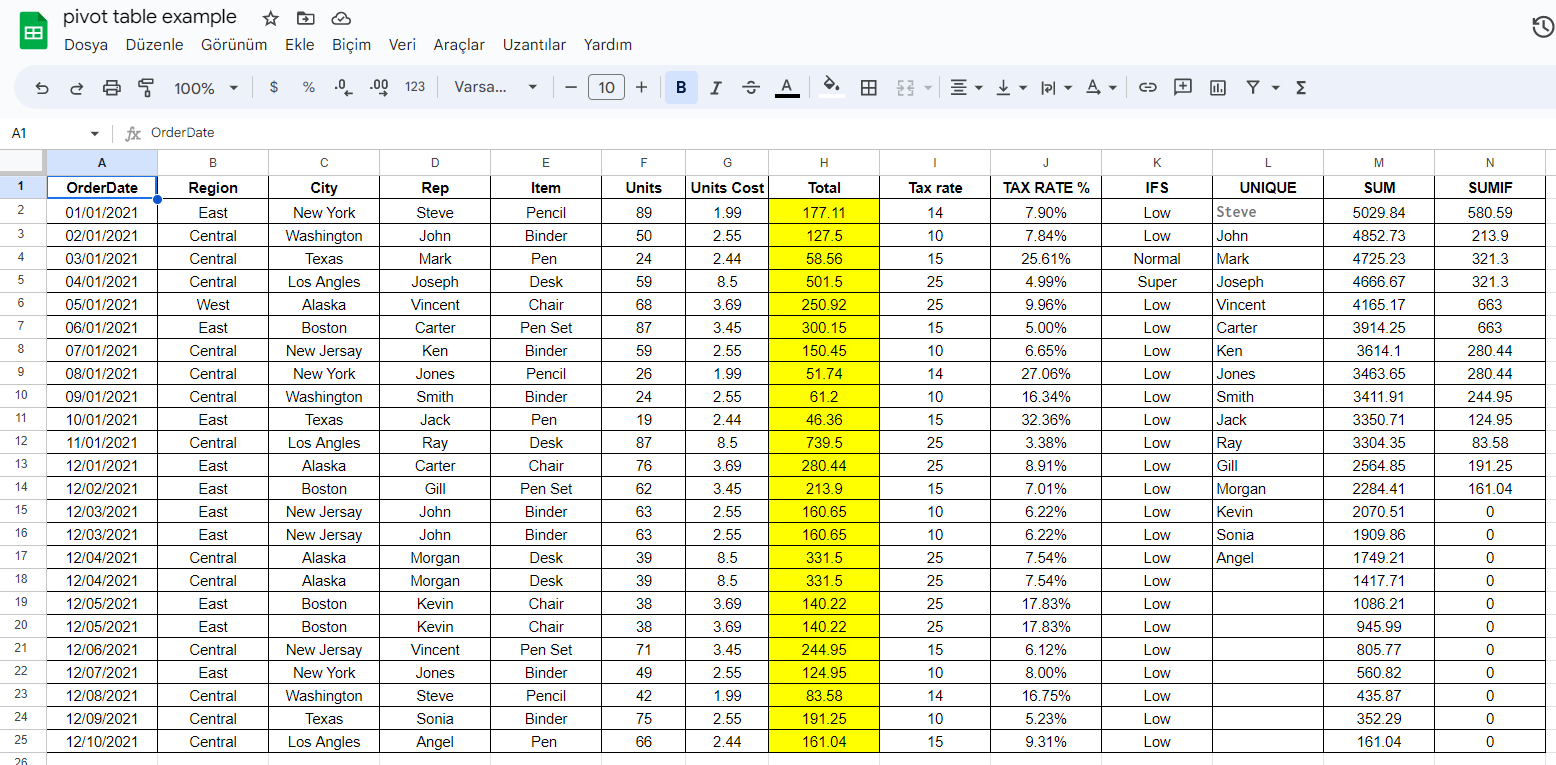
Google offers tools for document/data/presentation documents as ambitious as its rivals Microsoft and Apple. Google Sheets is a very useful tool for data processing.
Learnit Training Excel VBA Beginner Tutorial
Data Tutorials Full Project in Excel with Interactive Dashboard | Excel Project | Excel Project from Start to End
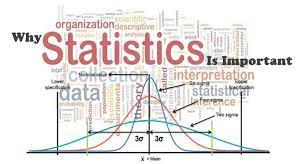
What does statistics mean? Various meanings of the word statistics exists.
1. Often used to refer to any recorded information,
2. Used to indicate a calculated series of information, eg mean, etc.
3. Collection and analysis of information contained in the data set of a statistical study and express the methods and techniques related to obtaining inferences from it.
What is the role of the person who deals with statistics?
1. Consulting on the design of an experiment or research before collecting information,
2. Analysis of the obtained data with appropriate statistical techniques and methods,
3. Decision makers, including government officials and those in industry, and presenting and interpreting results to researchers
Why apply statistics?
1. Statistics knowledge is important for those who will conduct and manage research,
2. Understanding the basics of statistics for a research and its effective presentation it is useful,
3. Learning statistics helps to distinguish between reality and fantasy in daily life.
Statistics A Full University Course on Data Science Basics
zedstatistics Teach me STATISTICS in half an hour! Seriously
The Organic Chemistry Tutor Introduction to Statistics
Geek's Lesson Statistics and Probability Full Course || Statistics For Data Science
Learning Statistics and Data
Britannica
Britannica science > statistics
Khanacademy
Statistics in Math:
Definition, Types, and Importance
OECD
Statistics
United Nations Department of Economic and Social Affairs Statistics
Eurostat
Learning Statistics
U.S. BUREAU OF LABOR STATISTICS Home
Learning Statistics
Read more with W3School
PowerBI is a collection of software services, applications, and connectors that work together to enable you to turn your independent data sources into consistent, visually immersive and interactive insights. Whether your data is a simple Excel spreadsheet or a collection of hybrid cloud-based and on-premises data warehouses, Power BI lets you easily connect to your data sources, visualize (or explore) important data, and share it with anyone you want.
PowerBI is a collection of software services, applications and connectors that work together to enable you to transform your independent data sources into consistent, visually immersive and interactive insights. Whether your data is a simple Excel spreadsheet or a collection of hybrid cloud-based and on-premises data warehouses, Power BI allows you to easily connect to your data sources, visualize (or explore) important data, and share it with anyone you want. Power BI, self-report and visualization It can be your tool or it can be used as an analysis and decision mechanism for group projects, departments or the whole company.
Power BI Components:Power BI; It includes a Windows desktop app called Power BI Desktop, an online SaaS (Software as a Service) service called Power BI service, and PowerBI mobile apps available for Windows phones and tablets, as well as iOS devices and Android devices. These three components (Desktop, service and Mobile) is designed to enable users to create, share, and use business insights that fit their needs or role.
Power BI CONTENT
1. Data Retrieval
• Power BI startup
• Connect to data sources in Power BI
• Cleaning and Transforming Your Data with Query Editor
• Clearing Irregularly Formatted Data
2. Modeling
• Introduction to Modeling Your Data
• How to Manage Your Data Relationships
• Creating Calculated Columns
• Optimization of Data Models
• Exploring Time-based Data
3. Visualization
• Introduction to Images
• Creating and Customizing Simple Visualizations
• Bar Charts
• Line Charts
• Mixed Graphics
• Dynamic Filtering
• Matrix and Tables
• Distribution Charts
• Waterfall and Funnel Graphics
• Scales and Odd Number Cards
• Changing Colors in Charts and Images
• Shapes, Text Boxes and Pictures
• Page layout
• Copying a Report Page
• Displaying Categories Without Data
• Visual Hierarchies
4. Publishing and Sharing
• Publishing Power BI Desktop Reports
5. Analyzes
• Increase Decrease Analysis
• Conditional Formatting
• Merge&Append
With PowerBI, we can see the relationships between millions of data very quickly. We can make past period analyzes and future productions based on this information. With scientific analyzes based on these data, companies can make the right decisions, improve their strengths, and take measures for their weak sides.

DATA
Again, with power BI, we can visualize the survey results, improve our understanding of the data, present the results of the process we have created, and make interactive comparisons.

Amit Chandak Learning Microsoft Power BI Tutorial For Beginners✨ | Power BI Full Course 2023 | Learn Power BI
Avi Singh - PowerBI Power BI Tutorial From Beginner to Pro ⚡ Desktop to Dashboard in 60 Minutes
Data Tutorial Power BI Project End to End | Dashboard | Beginners | Power BI Tutorial 2023
Pavan Lalwani Power BI Project End to End | Dashboard | Beginners | Power BI by Pavan Lalwani
Edureka Power BI Full Course - 10 Hours | Learn Power BI | Power BI Tutorial for Beginners [2023]
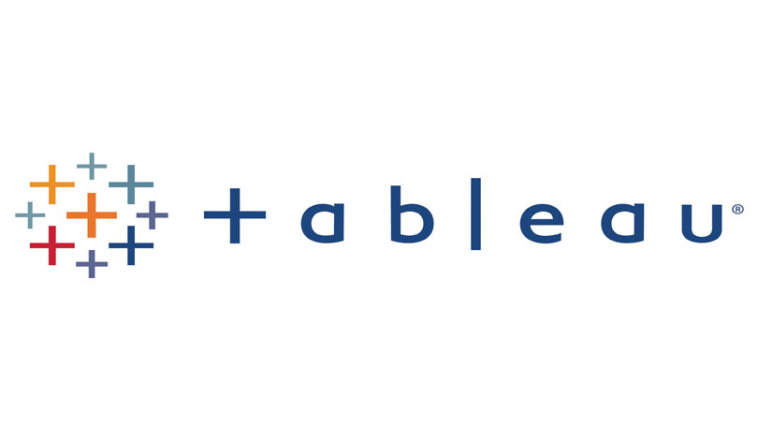
Tableau is one of the indispensable tools for those who are interested in data visualization, with its free version, rich and interactive data visualization possibilities, and an interface that does not require code knowledge. As a business intelligence software, Tableau is used for data analysis and data visualization in many fields from private companies to public institutions. One of these fields is undoubtedly journalism. With its rich graphic library, interactive structure and free "Public" version, it is one of the must-learn tools for data journalism activities.
Simplilearn Tableau Full Course 2022 | Tableau Training For Beginners | Tableau Tutorial
edureka! Tableau Full Course - Learn Tableau in 6 Hours | Tableau Training for Beginners
Simplilearn Tableau Tutorial For Beginners | Part 1 | Tableau Tutorial Part - 1 | Tableau Training
Other reseorch
javatpoint about Tableau Programming with Mosh Fundamentals of Data VisualizationO'REILLY | Claus O. Wilke ibmWhat is deep learning? Read more about Tableau
What is this R?Today, where data analysis has gained even more popularity, R has become a frequently mentioned programming language. So what is this R?
Developed in 1993 by Ross Ihaka and Robert Gentleman of the University of Auckland, New Zealand, R takes its name from the initials of its two developers. R is an open source free software language used for statistical computing, graphics and data analysis. R, which makes its users a part of the development process as it is a free software language, has evolved over time as users develop packages related to specific fields they are interested in and as new users come.
It is currently being developed by a team called the R Core Development Team. Today, it offers about 12000 packages to its users.
It is also very similar to the S programming language. Although most of its libraries are written in R, the libraries that require more computation are written in C, C++ and Fortran languages. Windows, MacOS and Linux versions are available.
Who is this R for? R offers a wide range of statistical (linear and nonlinear modelling, classical statistical tests, time series analysis, classification, clustering, and other) and graphing techniques. For this reason, it is very popular among data scientists and analysts. A few of the popular areas where it is used are machine learning, big data and bioinformatics.
Why R? The usage area of R and Python is quite similar. Then why or in what situations might we prefer R?
Python's usage area is more general than R's. Python covers software development along with statistical calculations. However, the purpose of R is statistical analysis and offers more packages to its users than Python in this area.
Python is popular in development while R is mostly used in academia.
If you need to integrate analysis results with apps, Python is the right choice for you because it has a wider ecosystem and more mature tools for production deployment.
In Which Fields Is R Programming Language Used?
Many analysts and data scientists around the world use the R programming language, which has become an essential tool for enterprises, to deal with their toughest problems in areas ranging from finance to manufacturing, e-commerce, healthcare, banking, comprehensive marketing. If we examine the real life applications of R;
Twitter: Leverages the R language for semantic clustering, data visualization, and displaying user experiences.
Facebook: It uses R to predict users' interactions and update the social network graph.
Amazon: Uses R in data analytics to improve cross-product recommendations for customers.
Mozilla: Mozilla, a search engine company, uses R to visualize web activities.
Microsoft: It also uses the R language as a statistical engine in Azure Machine Learning products and for the Xbox matchmaking service.
Google: It uses the R language to improve search results, provide better search suggestions, calculate the ROI of advertising campaigns, increase the efficiency of online advertising and predict their economic efficiency.
Bank of America: Uses R for financial reporting and calculating financial losses.
Merck: Merck & Co. company uses the R programming language for clinical research and drug testing.
Ford Motor Company: Ford uses R for statistical analysis to analyze customer thoughts about the product that helps them improve business strategy and future designs.
National Weather Service: Uses R for weather forecasting and disaster forecasting. They also use it to visualize their forecasts and forecasts to analyze areas affected by disasters.
What are the Differences Between Python and R?
Python and R are the most popular programming languages that you have heard about on your journey to becoming a data scientist, or will definitely hear if you haven't yet. These two programming languages, which are important for data science, are open source programming languages with a large community. Although they serve a similar purpose or are named in the same field, there are some differences between them.
Python was designed around the philosophy that “There should be only one and preferably only one way to do something”. Therefore it has several main packages to accomplish a task. R has hundreds of packages to accomplish the same task.
R makes it easy to use complex mathematical calculations and statistical tests. Python, on the other hand, is used to build something new from scratch, to develop applications.
Getting started with R is easy because it has simpler libraries and plots. However, learning Python libraries can be a bit complicated. (There are also those who claim the opposite.)
Some of the widely used IDEs of Python: PyCharm, Spyder, Thonny, Ipython. Some of the widely used IDEs of R are R Studio, Visual Studio for R, Eclipse.
In terms of popularity, Python is more popular than R.
R is better at data visualization, while Python is better at deep learning.
To make an example pairwise scatterplots:
R code:
library(GGally)
nba %>%
select(ast, fg, trb) %>%
ggpairs()
Python code:
import seaborn as sns
import matplotlib.pyplot as plt
sns.pairplot(nba[["ast", "fg", "trb"]])
To download R and R studio to your computer, you can first visit R Project and download it by connecting to the server of any country and selecting the operating system you use. Then all you have to do is visit R Studio and choose R Studio Desktop to install the version you prefer.
What are the disadvantages of R? Many users complain that R is slow when dealing with large data sets. This is because R works as single thread processing. So a single CPU is used. Another minus is that all the objects you use in R are removed from the RAM of your machine with the closing of the R program. This is another reason for R to run slowly.
SimplilearnR Programming Full Course for 2023 | R Programming For Beginners | R Tutorial
freeCodeCamp.org! R Programming Tutorial - Learn the Basics of Statistical Computing
R Programming 101 R programming in one hour - a crash course for beginners
Other reseorch
W3 School R Programming Learn R Programming Read more about The R Project for Statistical Computing
What is Python Python coding is a functional and user-friendly programming language that has become increasingly popular in recent years and is used by many large companies. This unstoppable rise of Python encourages many people today to learn coding with Python lessons. By learning Python, which has started to find its place among the most important trends of the technology age, you can work in many areas and get various benefits from them.
Why Python?
Python has become the most popular programming language of recent times. The reason why Python is so popular is undoubtedly that it is an easy-to-learn programming language.
By learning python , you can gain expertise in python programming in a short time with the help of videos or written resources and realize your dream project.
Due to the popularity of python programming, many software developers and companies create libraries for python and share them in the python library pool. Therefore, when we enter the python world, we have some opportunities to make our work easier.
The possibilities provided by Python help us a lot in overcoming the problems we may encounter during the learning process. Therefore, it would be definitely the right choice to start programming in python, which is a popular programming language. In fact, you may have heard in many places that python is taught as an introductory course in programming in many universities.
Learning python programming from zero to advanced has now become an easy and enjoyable process with python lessons.
Make a difference by learning python programming from beginning to end with python lessons because the popularity of Python is an indisputable fact.
Python Librares
Programming with MoshPython Programming for new beginners
freeCodeCamp.org! Advanced Computer Vision with Python - Full Course
freeCodeCamp.org! Object Oriented Programming with Python - Full Course for Beginners
freeCodeCamp.org! Web Scraping with Python - Beautiful Soup Crash Course
Kevin Stratvert Python for Beginners Tutorial
bro code Python full course for free
Other reseorch
https://python.camden.rutgers.edu/python_resources/python3_book/ codecademy | python W3School Bro Code | Python Full Course for free freeCodeCamp | Machine Learning for Everybody – Full Course freeCodeCamp | Deep Learning Crash Course for Beginners How to Think Like a Computer Scientist A Byte of Python A Byte of Python A Byte of Python Read more about Python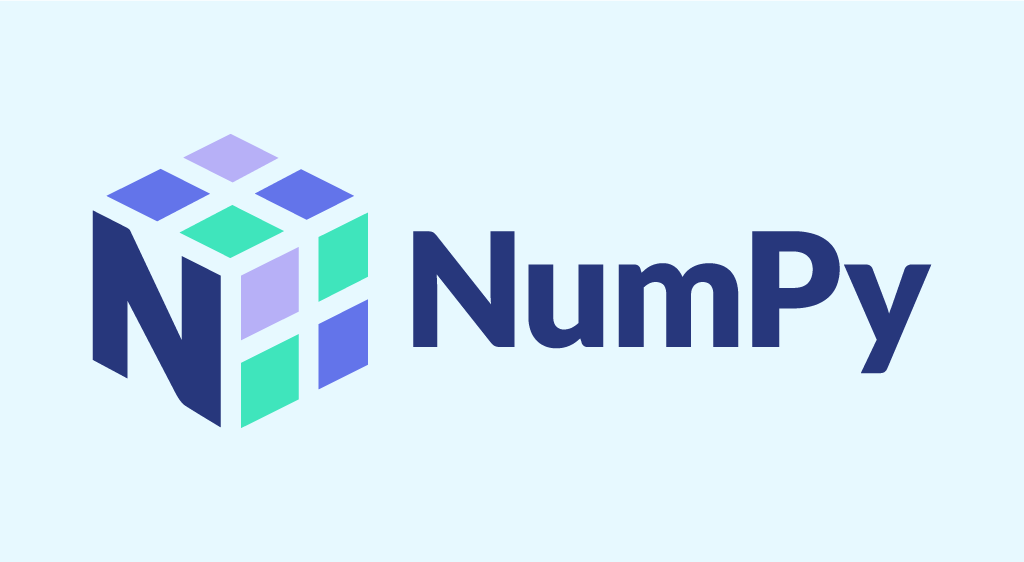
Numpy Numpy is one of the libraries available for the Python programming language. This library or module provides precompiled numerical and mathematical functions. For this reason, it is the most suitable library for working in mathematical fields such as linear algebra and matrices.
Numpy is designed to use memory efficiently in multidimensional arrays and scientific calculations. NumPy is an open source project created by Travis Oliphant in 2005.
NumPy stands for Numeric Python.
Why Use NumPy in Data Science? We have lists that serve the purpose of sequences we use in programming in Python, but they are slow to work. NumPy aims to provide an array object 50 times faster than the array objects traditional Python uses.
Array object in NumPy is called ndarray. NumpPy includes many support functions that make working with ndarray very, very easy.
Arrays are frequently used in data science where speed is paramount.
Why is NumPy Faster than Lists in Python? NumPy arrays are always stored somewhere in memory, unlike Python lists, so they can access data more quickly. This behavior is called "locality of reference" in computer science.
This is the main reason why NumPy is faster than lists. Also, NumPy is optimized to work with the latest CPU architectures.
In NumPy, an array is an object class very similar to lists in Python. However, in NumPy, arrays hold items of the same numeric data type, such as int or float. Thus, it can handle large numeric data efficiently compared to lists.
What language is NumPy written in? NumPy is a Python library and is partially written in Python, but most of the fast computational parts are written in C or C++.
Where is the NumPy Codebase? You can find the source codes for the NumPy codebase in this github repository: github.com/numpy
Using NumPy in Python If you are using an environment other than Anaconda, Spider, Jupiter Notebook, you can install NumPy with the help of pip install.
C:\Users\Your Name> pip install numpy
However, NumPy is already installed by default in IDEs like Anaconda, Spider, Jupiter Notebook.
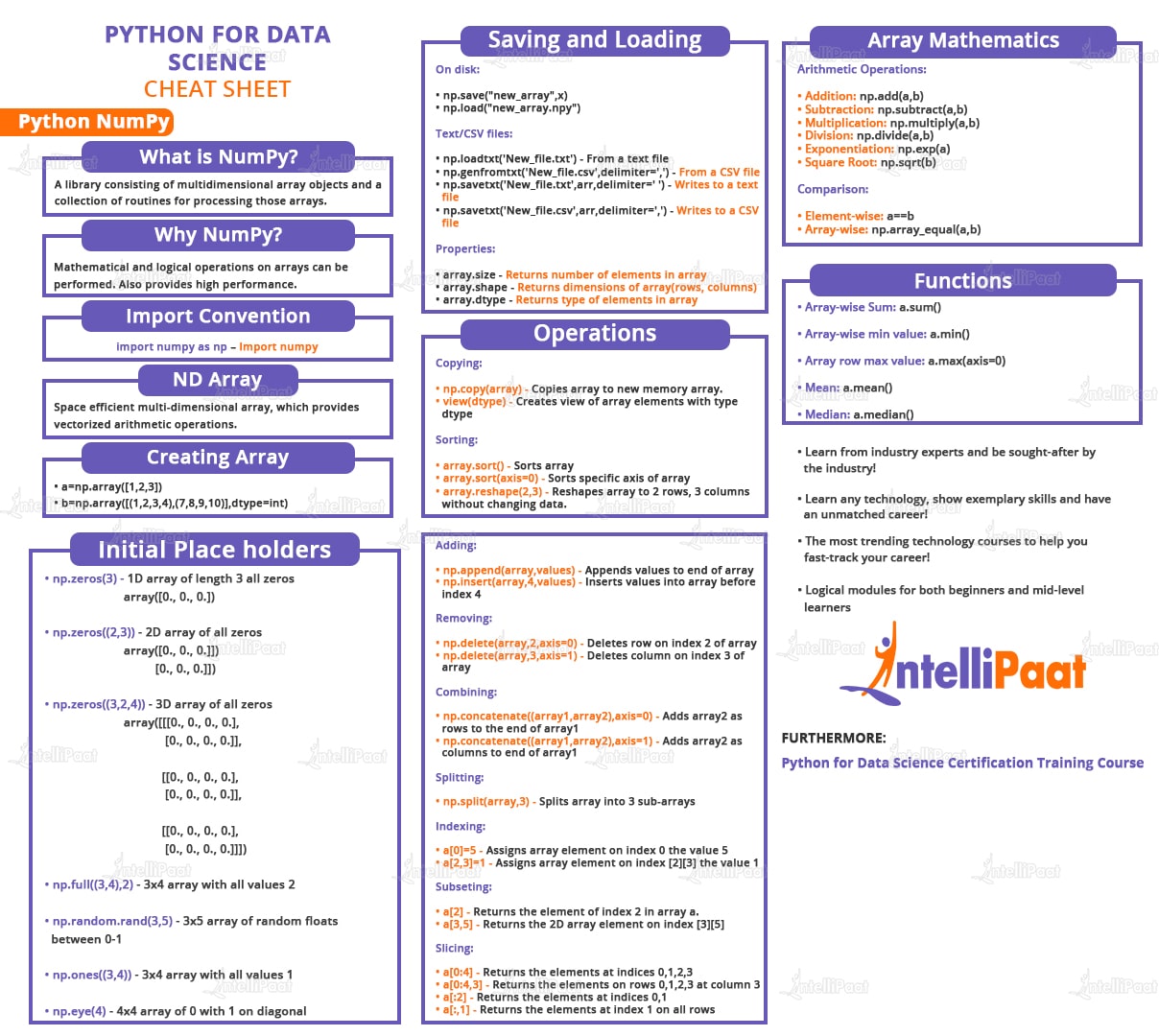 NumPy Ndarray
Python NumPy Tutorial | Learn With Examples
NumPy Ndarray
Python NumPy Tutorial | Learn With Examples
freeCodeCamp.org Python NumPy Tutorial for Beginners
Read more about Numpy
Pandas is one of the most important libraries of the Python programming language. With Pandas, data reading, data preprocessing and data cleaning stages are done in a data science project.
What is Pandas? After collecting the data, making the data suitable for analysis is very important for data analysis. Data preprocessing and data cleaning is the phase that takes the most time from data scientists. Analyzes are made easier and faster by organizing data with the Pandas library.
Pandas Data Structures Pandas has some data structures for easy analysis of data. The most used of these are the Series and DataFrame data structures. The Series data structure is one-dimensional, that is, it consists of one column.
The DataFrame data structure is two-dimensional, that is, it consists of rows and columns. Everything that can be done with a dataframe in the R programming language can be done with a DataFrame in Python. The DataFrame structure in Pandas is already modeled after the dataframe structure in R.
Corey Schafer Python Pandas Tutorial (Part 1): Getting Started with Data Analysis - Installation and Loading Data
Keith Galli Complete Python Pandas Data Science Tutorial! (Reading CSV/Excel files, Sorting, Filtering, Groupby)
WsCube Tech What is Data Analysis - Complete Introduction | Python Pandas Tutorial
codebasics Python Pandas Tutorial 1. What is Pandas python? Introduction and Installation
freeCodeCamp.org Data Analysis with Python - Full Course for Beginners (Numpy, Pandas, Matplotlib, Seaborn)
Extra reading
What is Pandas?
pypi.org/project/pandas/ pandas
learndatasci learndatasci
Data Science partners Python Pandas: Wat is Pandas? [de basis + voorbeelden]
Pandas pandas | pydata/a>
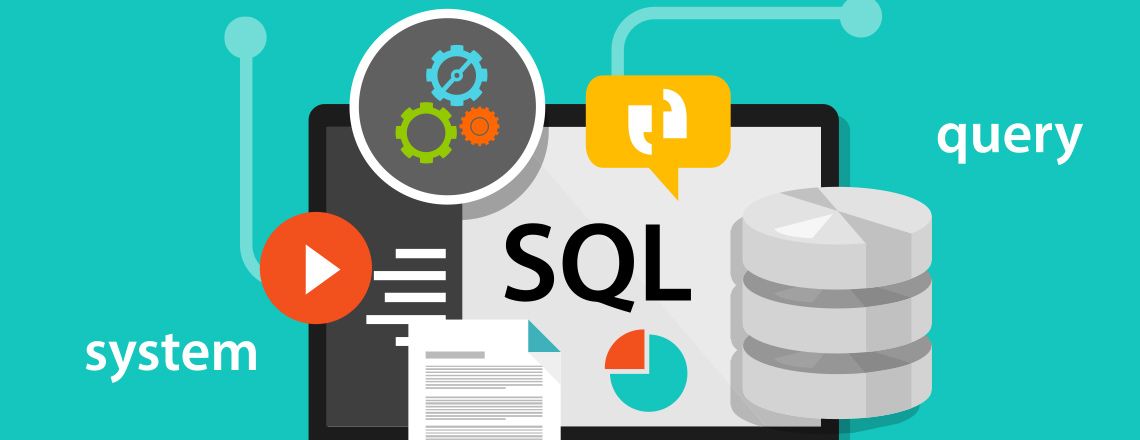
Basically with SQL;
create a database
add data
read data
delete data
We perform operations such as
SQL is used in conjunction with programming languages today to help manipulate data. For example, the information specified by the user, who registered on a website, is processed on the SQL database and then used in the software by being pulled over the SQL with the help of the pages again in the needed pages.
SQL COMMANDS
DDL (Data Definition Language) It is used for operations to be performed on database objects.
ALTER : It is used to update or add-remove the properties of the objects created in the database.
COMMENT : Allows adding comments to objects in the database.
CREATE : It is the command used to create objects in the database.
DROP : It is used to delete an object in the database.
TRUNCATE : It is used to clear an object in the database.
RENAME : Allows renaming objects in the database.
DML (Data Manipulation Language) It is used for operations to be performed on the data.
DELETE : Used to delete data or data.
INSERT : It is used to insert data or data.
SELECT : Used to query data or data.
UPDATE : Used to update data or data.
DCL (Data Control Language) It is used for operations related to accessing data.
GRANT: It is used to grant access to users in the database.
REVOKE : It is used to remove the access permission given to the users in the database.
Wikipedia Comparison of database administration tools
freeCodeCamp.org NoSQL Database Tutorial – Full Course for Beginners
Kevin Stratvert SQL for Beginners Tutorial
freeCodeCamp.org SQL Tutorial - Full Database Course for Beginners
Edureka SQL Full Course In 10 Hours [2023] | SQL Tutorial For Beginners | SQL For Beginners | Edureka
Simplilearn SQL Basics For Beginners | SQL Tutorial For Beginners | SQL For Beginners | Learn SQL | Simplilearn
Simplilearn SQL Full Course | SQL Tutorial For Beginners | Mysql Full Course | SQL Training | Simplilearn
Joey Blue Learn SQL in 1 Hour - SQL Basics for Beginners
Learnit Training SQL Querying for Beginners Tutorial
Intellipaat Learn SQL in 1 Hour - SQL Basics for Beginners
Absent Data Data Analyst Portfolio Project #1 | Build a Database | Develop SQL | Create a Dashboard
Yazılım Bilimi 1 Videoda Veritabanı Tasarımı , Normalizasyon ve SQL ( SQL Dersleri )
Extra reading
W3School SQL Tutorial
w3resource SQL Exercises, Practice, Solution
Khan Academy SQL: Querying and managing data
sql-practice Practice SQL
W3School Exercise:
Geekflare Practice Your SQL Skills On These 6 Coding Platforms
kdnuggets 7 Best Platforms to Practice SQL
sqlzoo SQL Tutorial
codecademy SQL Eğitimi
oracle SQL Eğitimi
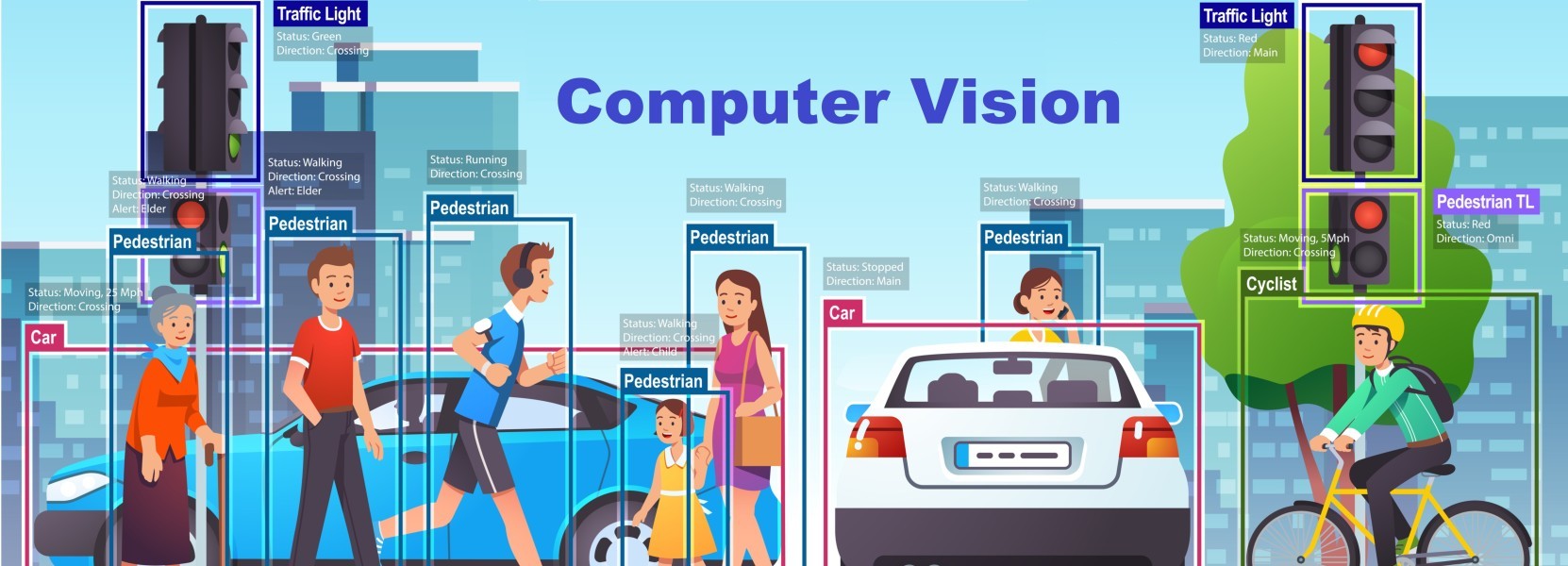
Computer Vision is the field of computer science that deals with technologies that enable computers to identify and process objects they see as humans. It covers the subjects of acquiring, processing, analyzing, understanding, extracting numerical data from images and making decisions as a result of these. The said image may be in the form of photographs, videos, videos taken from multiple cameras looking at the same point, images acquired with a 3D scanner, or the outputs of medical imaging devices such as an ultrasound device.
Computer Vision studies first started in the 1950s. Commercially, it was first used in an application that perceived the difference between printing and handwriting in the 1970s. The real development in the field of Computer Vision has taken place in recent years. Both the rapid increase in the processing power of computers and the widespread use of the internet have resulted in a significant increase in the visual data we have. About 3 billion photos are shared by users every day. By 2022, Computer Vision's market share is expected to reach $48 billion.
Usage and application areas;
Medicine
Machine view
Military
Autonomous Vehicles
Touch Feedback
Security Systems
Cartography
Optical character recognition
Marketing
Finance
Edge detection
Feature matching
Image classification
Augmented reality
Computer Vision is currently used in many different fields. For example, visual data used to diagnose diseases in the medical field are processed and used for physicians and researchers to achieve better results or to diagnose diseases directly. In addition, it is also involved in detecting tumors, measuring the size of organs, blood flow velocity in the body, and similar processes. Apart from medicine, it is used in industry such as robot arms to detect the position and direction of the product they are working with, and to work more efficiently. In addition, it is used in the food industry for tasks such as easily detecting and sorting poor quality products, damaged fruit and vegetables. One of the most important examples is autonomous vehicles. Computer Vision applications are used in unmanned aerial vehicles, vehicles sent to the surfaces of Mars and the Moon, and driverless cars to detect their location and surrounding objects, not to get stuck in obstacles or violate traffic rules while advancing on their route. In addition, autonomous vehicles used for special purposes such as examining natural resources and detecting forest fires also use Computer Vision algorithms.
Referances
Bilginc IT AcademykArtificial Neural Networks That Come to Our HelpIf we are going to work on images, we come across deep learning algorithms. Objects in images can be separated from each other with various deep learning algorithms. The most used of these algorithms is convolutional neural networks (CNN). These neural networks, which Yann LeCun introduced to computer science, are one of the most influential innovations. Convolutional neural networks are a specialized deep learning algorithm. The continuation of these networks, whose first layer consists of a convolutional layer, is followed by pooling and fully-connected layers. The first layer of these networks is the convolutional layer. Among these layers, which are responsible for understanding the basic properties of the image, is usually the pooling layer. The pooling layer is used for size reduction and to reduce the number of calculations. The fully connected layer is a layer in the classical neural network structure. And it's always at the end.
After many iterative layers, forward or backward propagation, testing, the model is trained and ready to recognize the image. Thus, the machines open their eyes.
Computer Vision? Image Processing? However, we should not confuse image processing with computer vision here.
In image processing, the image is given to the machine in a certain format and an output is taken. It prepares the image to the desired state with certain algorithms. The machine saves the image for later or other use. Image processing has different branches such as image restoration, image enhancement, scene reconstruction, filtering.
Computer vision is the top subject of image processing. Computer vision encompasses all work related to natural vision. These are mostly operations such as object recognition, error detection, classification. Here, when we give the image to the machine, we get information instead of a different or desired output. Based on this information, we decide on the action to be taken. These can be the domain of image processing. In other words, computer vision uses image processing for some problems after obtaining the desired information.
Brief History In 1966, Seymour Papert, Marvin Minsky and their team started a project called the summer vision project.1-2 The purpose of the project was for a computer program to recognize objects. However, this was done manually. Different rules were written for each object and the machine was asked to guess correctly what the object was. It was difficult to write manual rules for all objects, as each object stood in different light from a different angle. As a matter of fact, this project did not turn out well.
Stanford University School of Engineering Lecture 1 | Introduction to Convolutional Neural Networks for Visual Recognition
Tübingen Machine Learning Computer Vision - Lecture 1.1 (Introduction: Organization)
Michigan Online Lecture 1: Introduction to Deep Learning for Computer Vision
freeCodeCamp.org Advanced Computer Vision with Python - Full Course
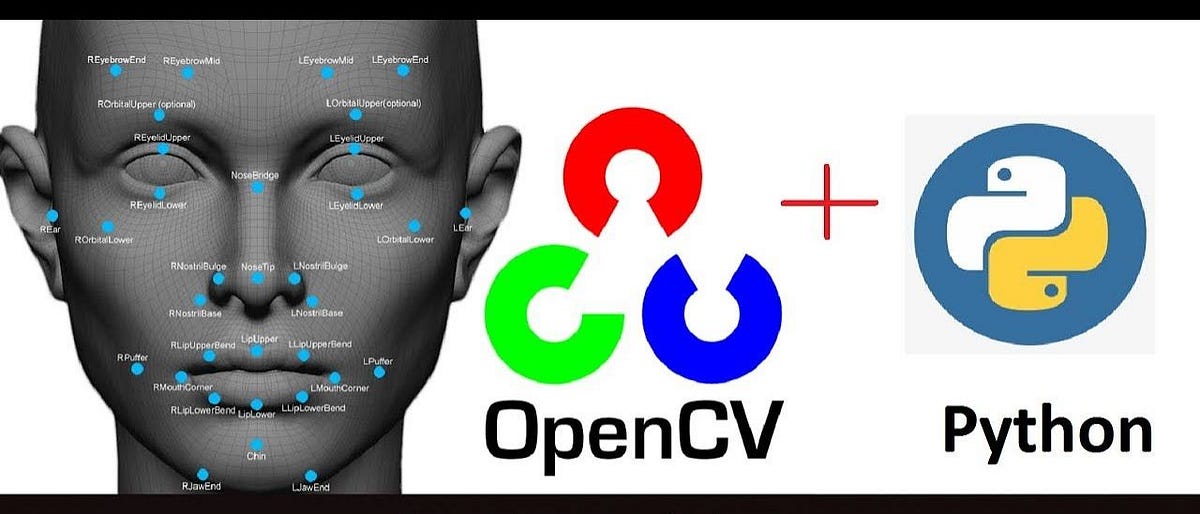
OpenCv, in its most general sense, is a large library suitable for real-time use in the field of computer vision. The fact that the library is open source, supported by many programming languages (Python, C/C++, Java, MATLAB etc.) and operating system (Windows, Linux, Android, Mac-OS etc.) is very effective in the widespread use of this technology.
Image processing and machine learning within the OpenCV library. There are more than 2500 algorithms for learning. With these algorithms, face recognition, object discrimination detecting human movements, object classification, license plate recognition, three-dimensional image processing, image comparison, optical character identification OCR (Optical Character Recognition) operations can be done easily. Overall, video reading in OpenCV is a powerful and versatile tool for computer vision applications. Surveillance, video editing and object tracking by allowing analysis and manipulation of video data It allows a wide variety of applications in fields such as>
Computer vision allows the computer to perform the same kind of tasks as humans with the same efficiency. There are a two main task which are defined below:
Object Classification - In the object classification, we train a model on a dataset of particular objects, and the model classifies new objects as belonging to one or more of your training categories.
Object Identification - In the object identification, our model will identify a particular instance of an object - for example, parsing two faces in an image and tagging one as Virat Kohli and other one as Rohit Sharma.
ProgrammingKnowledge OpenCV Python Tutorial - Find Lanes for Self-Driving Cars (Computer Vision Basics Tutorial)
Murtaza's Workshop - Robotics and AI Parking Space Counter using OpenCV Python | Computer Vision
freeCodeCamp.org OpenCV Course - Full Tutorial with Python
Aryan verma #12 OPENCV-PYTHON | Lines, Shapes, Polygons, Text | Aliasing in OpenCV | Figure and text in opencv

Machine learning (ML) is a subset of artificial intelligence (AI) that focuses on building systems that learn or improve performance based on the data they consume. Artificial intelligence is a comprehensive term that refers to systems or machines that mimic human intelligence.
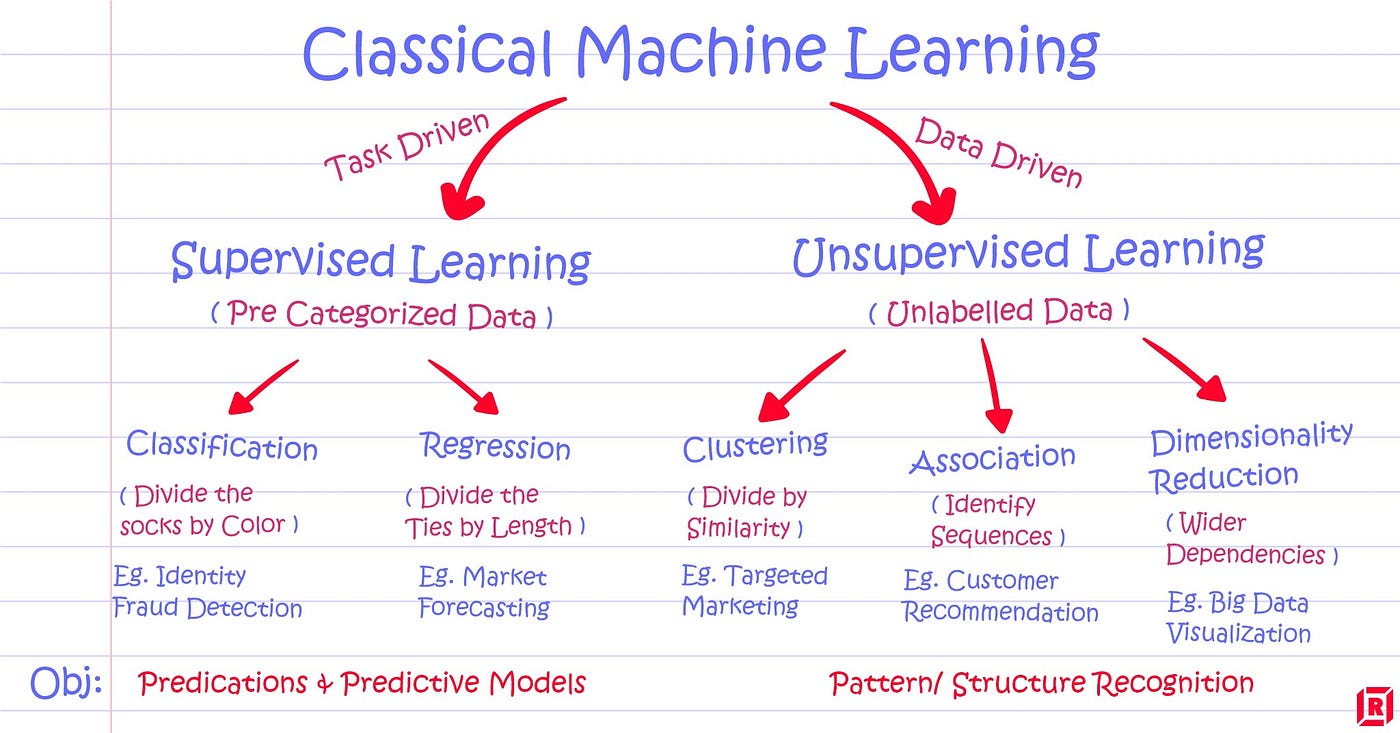
Machine learning and deep learning and components of neural networks all fit into concentrated subsets of artificial intelligence. Artificial intelligence processes data to make decisions and predictions. Machine learning algorithms allow artificial intelligence not to process this data, but to use it to learn and retrieve it more intelligently without the need for any additional programming. Artificial intelligence is the parent of all machine learning subsets under it. The first subset includes machine learning; this is deep learning and then the neural networks inside. In summary, it is an important distinction that while all machine learning solutions are artificial intelligence, not all artificial intelligence solutions are machine learning.
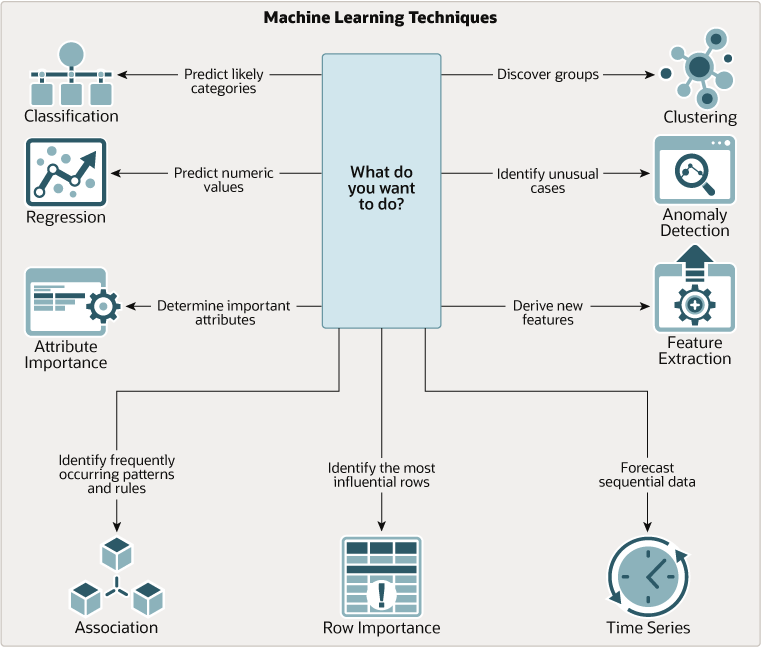
Machine learning is the idea of creating generic algorithms that can tell you remarkable things about a given dataset without having to write code. Instead of writing code, you feed this general algorithm with data, and that way the algorithm builds its own logic based on that data.
Machine Learning
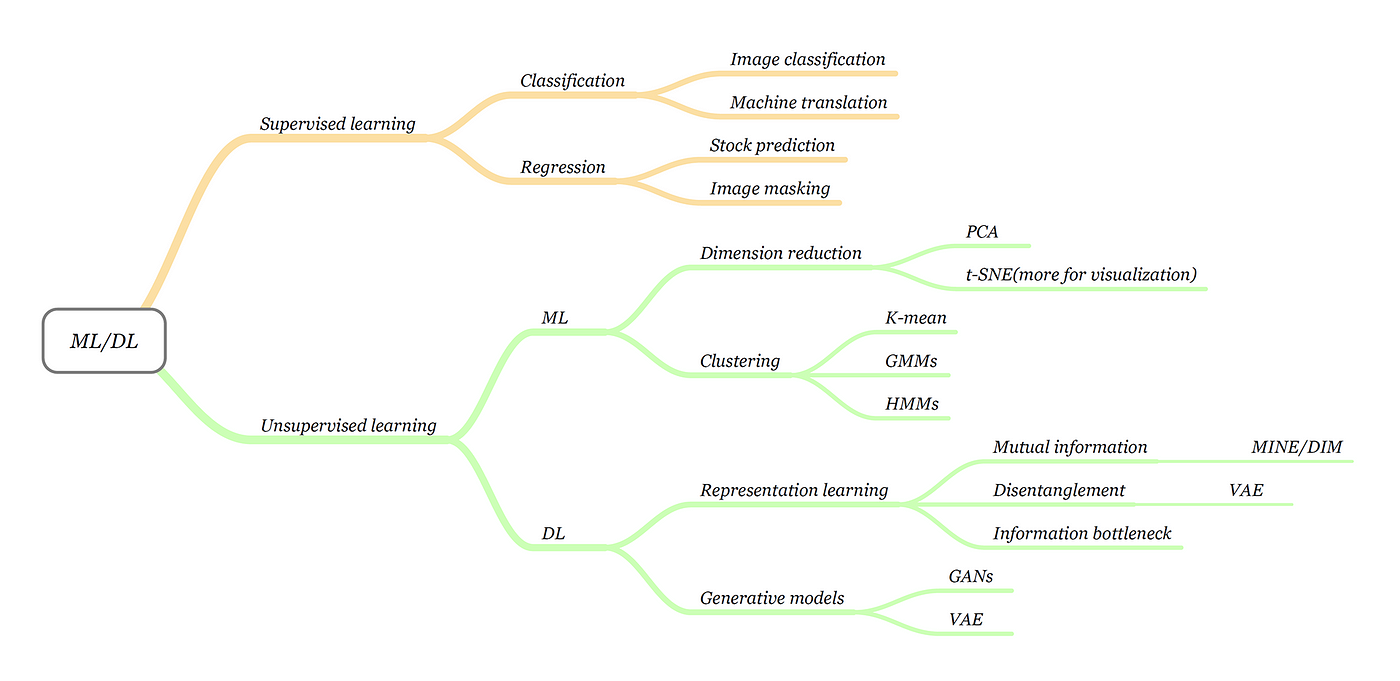
Simplilearn Machine Learning Basics | What Is Machine Learning? | Introduction To Machine Learning
freeCodeCamp.org Machine Learning for Everybody – Full Course
Edureka Machine Learning Full Course - Learn Machine Learning 10 Hours | Machine Learning Tutorial
Decomplexify Learn Database Normalization - 1NF, 2NF, 3NF, 4NF, 5NF
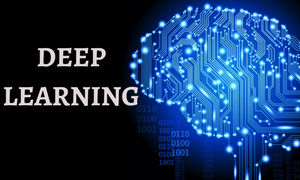
What is Deep Learning? Deep learning is a machine learning method consisting of multiple layers that predicts results with a given data set. Deep learning, machine learning and artificial intelligence are terms that have different meanings. Deep learning, machine learning; machine learning can be summarized as a sub-branch of artificial intelligence. Home Software Articles What is Deep Learning?
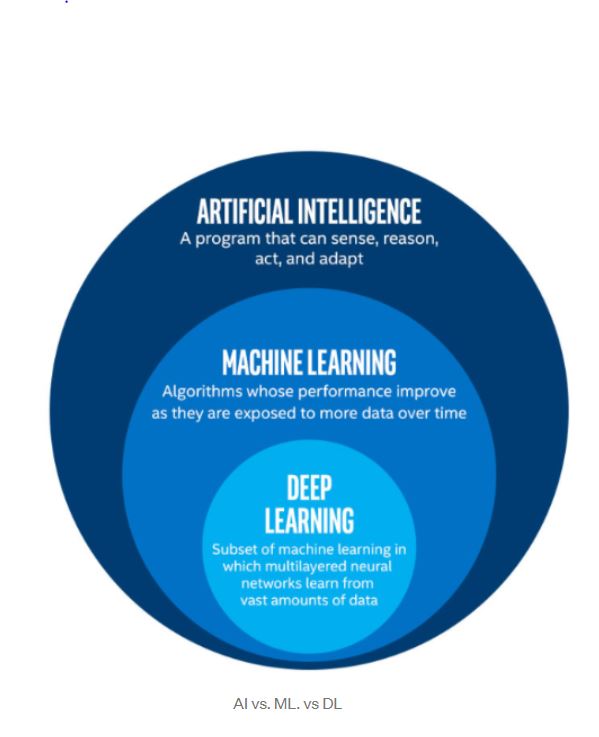
Deep learning can be conducted supervised, semi-supervised or unsupervised. In deep learning, it learns distinctive features by itself with a large number of data entries. The more data input for the learning process, the more successful it will be. Data passes through multiple layers. The upper layers are those that bring out more detail.
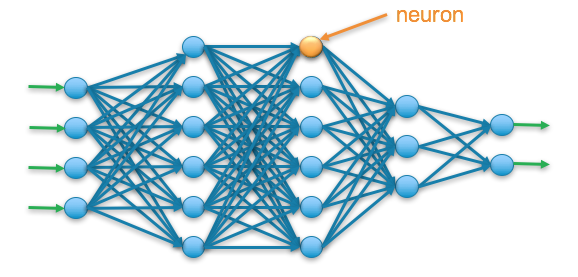
Machine learning is the idea of creating generic algorithms that can tell you remarkable things about a given dataset without having to write code. Instead of writing code, you feed this general algorithm with data, and that way the algorithm builds its own logic based on that data.
Machine Learning
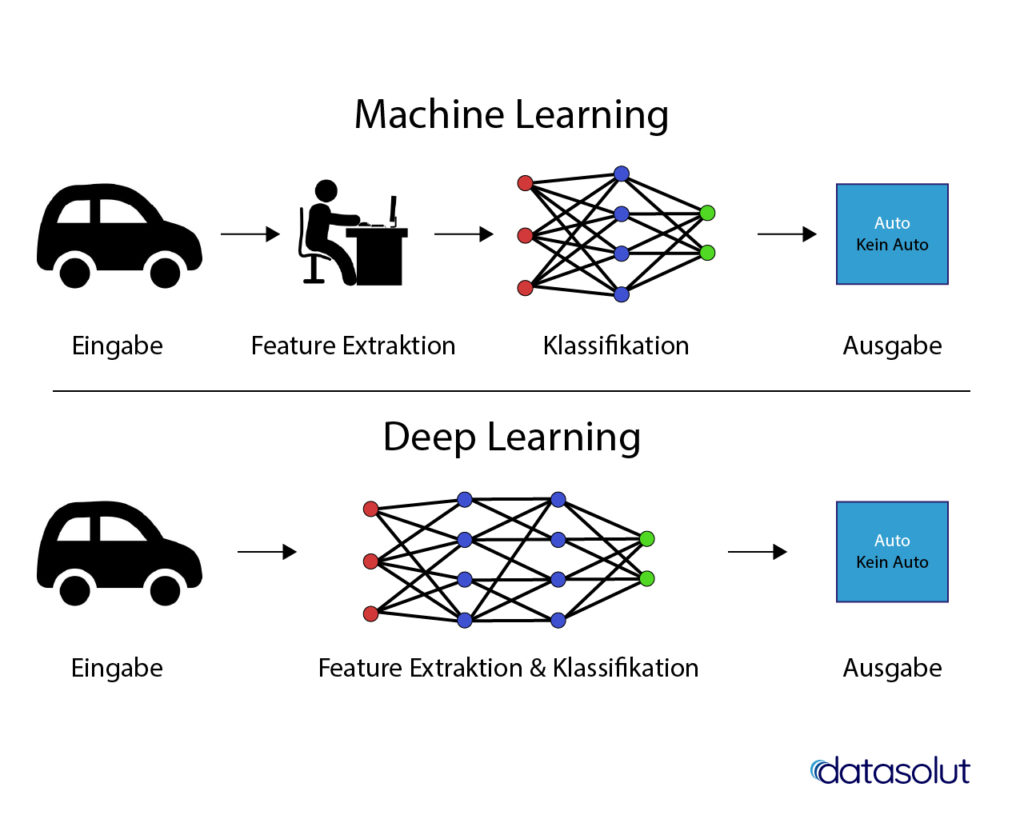
Three main types of deep models:
- Multilayer Perceptron
- Convolutional Neural Networks
- Recurrent Neural Networks
Uses of deep learning:
- In facial recognition systems
- In voice recognition systems
- It is used in vehicles with autopilot feature or driverless vehicles.
- In alarm systems, technologies such as the activation of the alarm system only in case of unusual movements, instead of constantly checking the camera recordings, are possible thanks to deep learning.
- It eliminates the waste of time in cancer research in the health sector. Deep learning algorithms, in which cancerous cell samples are introduced, are both faster and more successful in diagnosing whether new cells are cancerous or not.
- In image enhancement
- In recommendation systems, offering music and movie recommendations to like
- Deep learning methods can be developed in cyber threat analysis.
freeCodeCamp.org Deep Learning Crash Course for Beginners
freeCodeCamp.org How Deep Neural Networks Work - Full Course for Beginners
Alexander Amini MIT Introduction to Deep Learning | 6.S191
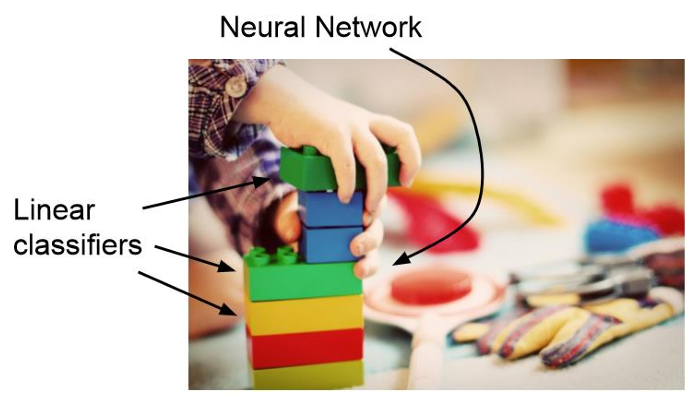
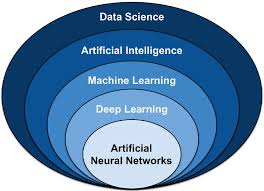
There are multiple stages in the development and deployment of machine learning models, including training and inference. AI training and inference refers to the process of experimenting with machine learning models to solve a problem.
For example, a machine learning engineer might try different candidate models for a computer vision problem, such as detecting bone fractures in X-ray images.
To increase the accuracy of these models, the engineer feeds the data to the models and adjusts the parameters until they meet a predefined threshold. Measured by model complexity, these training needs increase exponentially each year.
Key infrastructure technologies for AI training at scale include cluster networking such as RDMA and InfiniBand, bare metal GPU computing, and high-performance storage.
Simplilearn Artificial Intelligence Full Course 2022 | AI Full Course | AI And ML Full Course | Simplilearn
Edureka Artificial Intelligence Full Course in 10 Hours [2023] | Artificial Intelligence Tutorial | Edureka
Paul McWhorter AI For Everyone LESSON 1: Introduction to Artificial Intelligence for Absolute Beginners
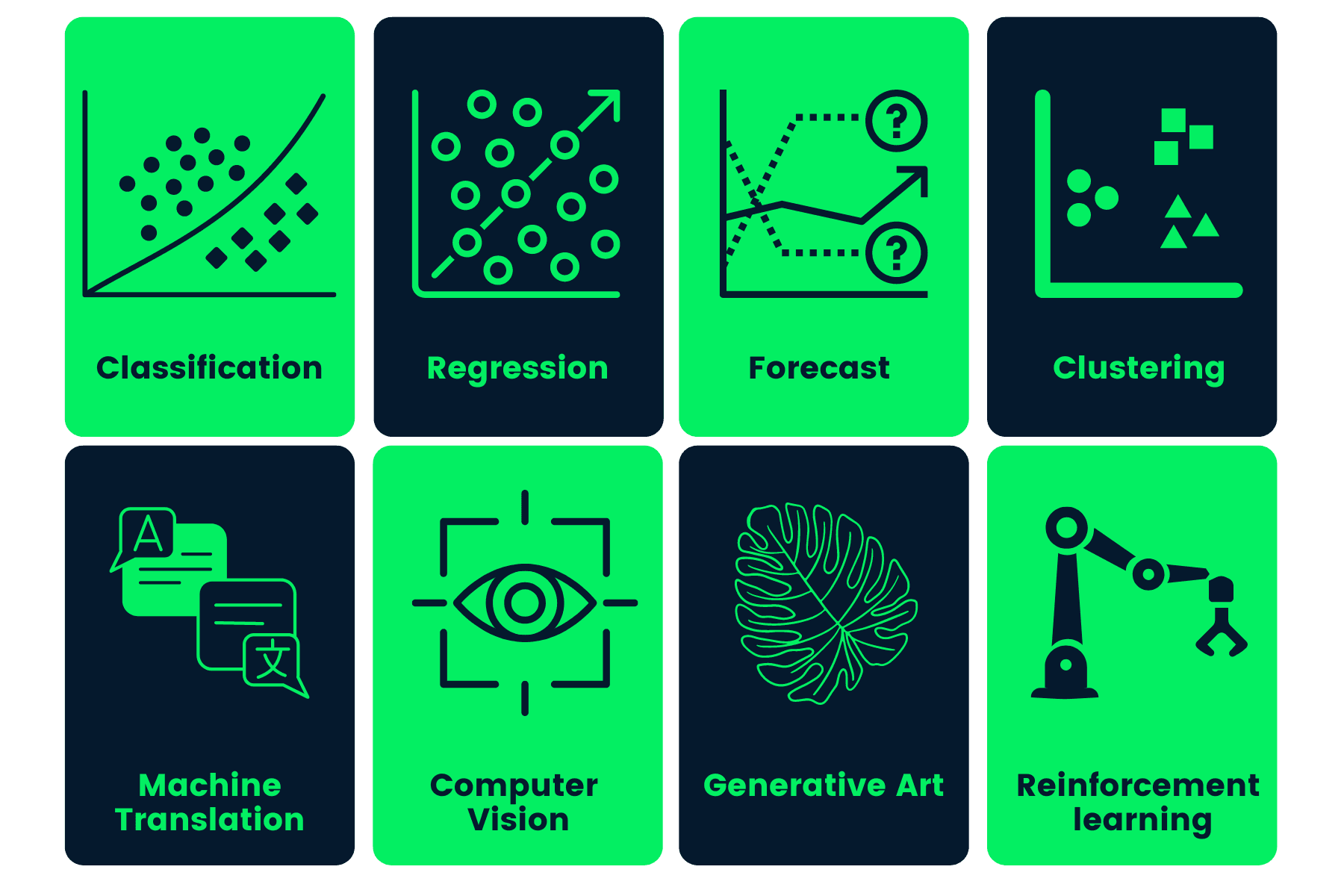
What is Artificial Intelligence? Artificial intelligence is simply defined as systems that mimic human intelligence to perform specific tasks and can improve themselves by iterating the information they collect. The most important feature that distinguishes artificial intelligence from today's technology systems is that it can imitate human intelligence. This system observes the existing situations and processes the relevant situation in line with the predetermined parameters and gives a reaction accordingly. In this process, artificial intelligence processes state-related data by combining it with fast, iterative and intelligent algorithms.
History of Artificial Intelligence The term artificial intelligence, which was coined in 1956, has become more popular today with advances in science and technology such as the increase in data volumes and the development of algorithms and computations. In its early stages, studies on artificial intelligence were related to issues such as problem solving and symbolic methods. Artificial intelligence, which developed with machine learning in the following periods, continues to develop with deep learning, which enables it to perform operations such as speech, recognizing images and data, and making predictions.
How Artificial Intelligence Works Artificial intelligence works by combining large-scale data with intelligent algorithms and iterative processing. In this process, the patterns or features of the processed data allow the artificial intelligence to learn automatically. Artificial intelligence with various functions works together with different methods and technologies. The methods and technologies in question can be summarized as follows:
> Machine Learning:By automating the creation of analytical models with artificial intelligence machine learning, it can find insights in data using neural networks, statistics, physics methods without the need for separate programming.
> Artificial Neural Network: It includes the processing of information by responding to external inputs thanks to artificial intelligence and artificial neural networks consisting of units that transfer information between them. With this method, artificial intelligence can find the connections between the units and make sense of the data defined by multiple passes.
> Deep Learning Technology: With this method, artificial intelligence uses advanced computation and training techniques to learn the complex model of many data units. In this process, it uses large neural networks with multiple layers of processing units.
> Cognitive Computing: This system enables artificial intelligence to transfer a human-like interaction to machines. With cognitive computing, artificial intelligence is enabled to interpret images, speech, data and then give them consistent feedback.
> Advanced Algorithm: This system enables AI to analyze more data faster and at multiple levels. In addition, the advanced algorithm is used to understand complex systems, identify and optimize rare scenarios.
> Graphical Processing Units: Graphical processing units, which provide the computational power that artificial intelligence needs for iterative processing, enable neural networks to be trained.
by Stuart Russell and Peter Norvig berkeley Artificial Intelligence: A Modern Approach, 4th US ed.
Read more ai.googleWhat are you trying to do with AI today?
There are multiple stages in the development and deployment of machine learning models, including training and inference. AI training and inference refers to the process of experimenting with machine learning models to solve a problem.
For example, a machine learning engineer might try different candidate models for a computer vision problem, such as detecting bone fractures in X-ray images.
To increase the accuracy of these models, the engineer feeds the data to the models and adjusts the parameters until they meet a predefined threshold. Measured by model complexity, these training needs increase exponentially each year.
Key infrastructure technologies for AI training at scale include cluster networking such as RDMA and InfiniBand, bare metal GPU computing, and high-performance storage.
Web Scraping Web Scraping with Python - Beautiful Soup Crash Course
Pythonology Web Scraping to CSV | Multiple Pages Scraping with BeautifulSoup
Paul McWhorter AI For Everyone LESSON 1: Introduction to Artificial Intelligence for Absolute Beginners

What is Artificial Intelligence? Artificial intelligence is simply defined as systems that mimic human intelligence to perform specific tasks and can improve themselves by iterating the information they collect. The most important feature that distinguishes artificial intelligence from today's technology systems is that it can imitate human intelligence. This system observes the existing situations and processes the relevant situation in line with the predetermined parameters and gives a reaction accordingly. In this process, artificial intelligence processes state-related data by combining it with fast, iterative and intelligent algorithms.
History of Artificial Intelligence The term artificial intelligence, which was coined in 1956, has become more popular today with advances in science and technology such as the increase in data volumes and the development of algorithms and computations. In its early stages, studies on artificial intelligence were related to issues such as problem solving and symbolic methods. Artificial intelligence, which developed with machine learning in the following periods, continues to develop with deep learning, which enables it to perform operations such as speech, recognizing images and data, and making predictions.
How Artificial Intelligence Works Artificial intelligence works by combining large-scale data with intelligent algorithms and iterative processing. In this process, the patterns or features of the processed data allow the artificial intelligence to learn automatically. Artificial intelligence with various functions works together with different methods and technologies. The methods and technologies in question can be summarized as follows:
> Machine Learning:By automating the creation of analytical models with artificial intelligence machine learning, it can find insights in data using neural networks, statistics, physics methods without the need for separate programming.
> Artificial Neural Network: It includes the processing of information by responding to external inputs thanks to artificial intelligence and artificial neural networks consisting of units that transfer information between them. With this method, artificial intelligence can find the connections between the units and make sense of the data defined by multiple passes.
> Deep Learning Technology: With this method, artificial intelligence uses advanced computation and training techniques to learn the complex model of many data units. In this process, it uses large neural networks with multiple layers of processing units.
> Cognitive Computing: This system enables artificial intelligence to transfer a human-like interaction to machines. With cognitive computing, artificial intelligence is enabled to interpret images, speech, data and then give them consistent feedback.
> Advanced Algorithm: This system enables AI to analyze more data faster and at multiple levels. In addition, the advanced algorithm is used to understand complex systems, identify and optimize rare scenarios.
> Graphical Processing Units: Graphical processing units, which provide the computational power that artificial intelligence needs for iterative processing, enable neural networks to be trained.
by Stuart Russell and Peter Norvig berkeley Artificial Intelligence: A Modern Approach, 4th US ed.
Read more ai.googleWhat are you trying to do with AI today?
There are multiple stages in the development and deployment of machine learning models, including training and inference. AI training and inference refers to the process of experimenting with machine learning models to solve a problem.
For example, a machine learning engineer might try different candidate models for a computer vision problem, such as detecting bone fractures in X-ray images.
To increase the accuracy of these models, the engineer feeds the data to the models and adjusts the parameters until they meet a predefined threshold. Measured by model complexity, these training needs increase exponentially each year.
Key infrastructure technologies for AI training at scale include cluster networking such as RDMA and InfiniBand, bare metal GPU computing, and high-performance storage.
Web Scraping Web Scraping with Python - Beautiful Soup Crash Course
Edureka Artificial Intelligence Full Course in 10 Hours [2023] | Artificial Intelligence Tutorial | Edureka
Paul McWhorter AI For Everyone LESSON 1: Introduction to Artificial Intelligence for Absolute Beginners
SpringDeveloper Hadoop - Just the Basics for Big Data Rookies

What is Artificial Intelligence? Artificial intelligence is simply defined as systems that mimic human intelligence to perform specific tasks and can improve themselves by iterating the information they collect. The most important feature that distinguishes artificial intelligence from today's technology systems is that it can imitate human intelligence. This system observes the existing situations and processes the relevant situation in line with the predetermined parameters and gives a reaction accordingly. In this process, artificial intelligence processes state-related data by combining it with fast, iterative and intelligent algorithms.
History of Artificial Intelligence The term artificial intelligence, which was coined in 1956, has become more popular today with advances in science and technology such as the increase in data volumes and the development of algorithms and computations. In its early stages, studies on artificial intelligence were related to issues such as problem solving and symbolic methods. Artificial intelligence, which developed with machine learning in the following periods, continues to develop with deep learning, which enables it to perform operations such as speech, recognizing images and data, and making predictions.
How Artificial Intelligence Works Artificial intelligence works by combining large-scale data with intelligent algorithms and iterative processing. In this process, the patterns or features of the processed data allow the artificial intelligence to learn automatically. Artificial intelligence with various functions works together with different methods and technologies. The methods and technologies in question can be summarized as follows:
> Machine Learning:By automating the creation of analytical models with artificial intelligence machine learning, it can find insights in data using neural networks, statistics, physics methods without the need for separate programming.
> Artificial Neural Network: It includes the processing of information by responding to external inputs thanks to artificial intelligence and artificial neural networks consisting of units that transfer information between them. With this method, artificial intelligence can find the connections between the units and make sense of the data defined by multiple passes.
> Deep Learning Technology: With this method, artificial intelligence uses advanced computation and training techniques to learn the complex model of many data units. In this process, it uses large neural networks with multiple layers of processing units.
> Cognitive Computing: This system enables artificial intelligence to transfer a human-like interaction to machines. With cognitive computing, artificial intelligence is enabled to interpret images, speech, data and then give them consistent feedback.
> Advanced Algorithm: This system enables AI to analyze more data faster and at multiple levels. In addition, the advanced algorithm is used to understand complex systems, identify and optimize rare scenarios.
> Graphical Processing Units: Graphical processing units, which provide the computational power that artificial intelligence needs for iterative processing, enable neural networks to be trained.
by Stuart Russell and Peter Norvig berkeley Artificial Intelligence: A Modern Approach, 4th US ed.
Read more WOLFRAM What are you trying to do with AI today?